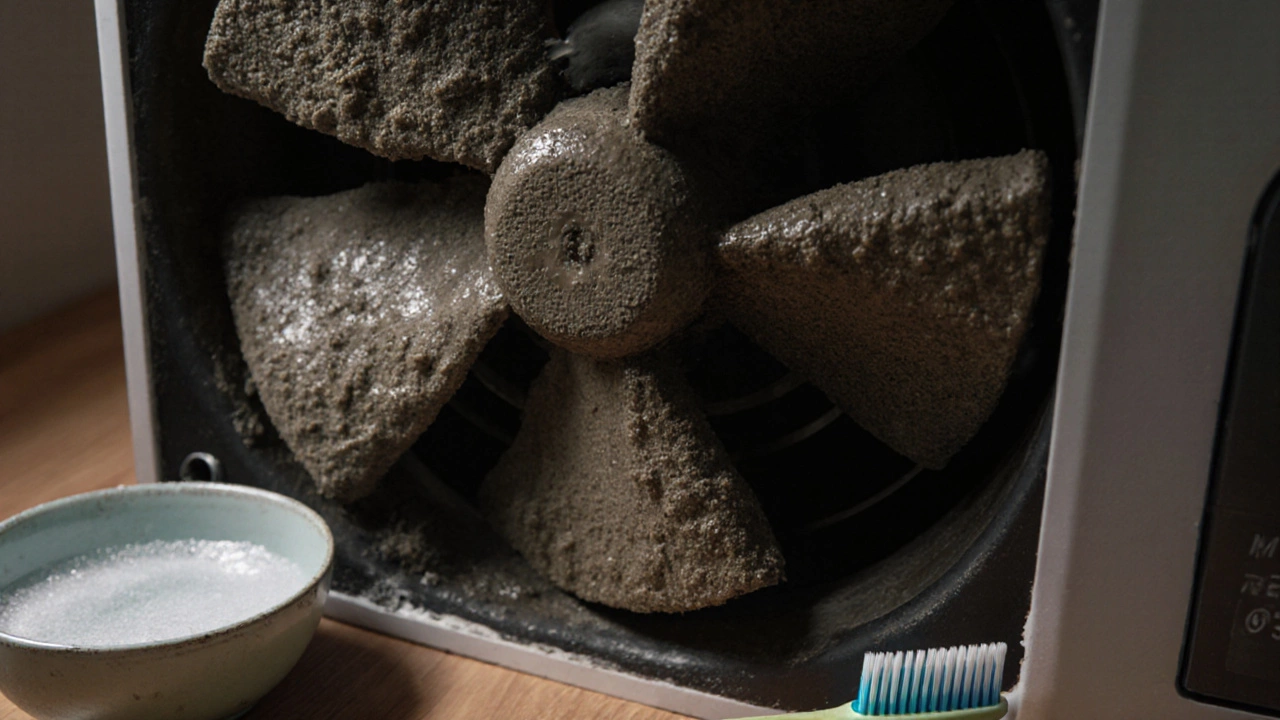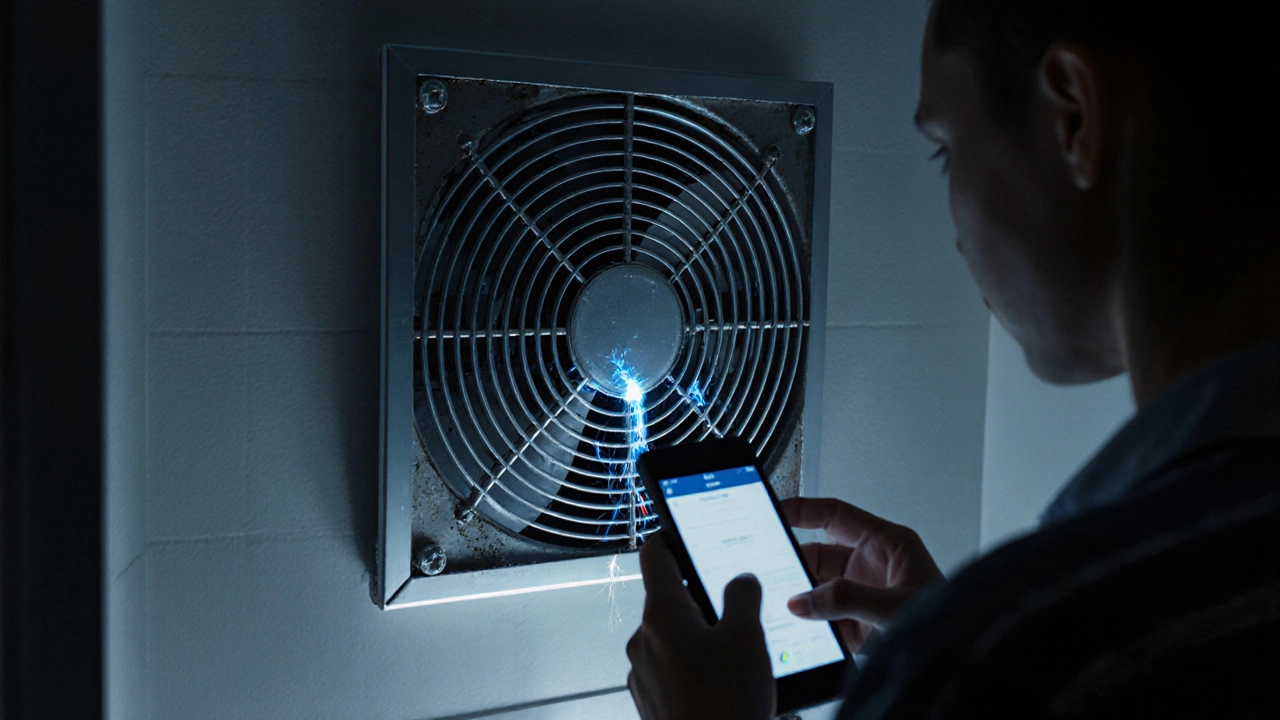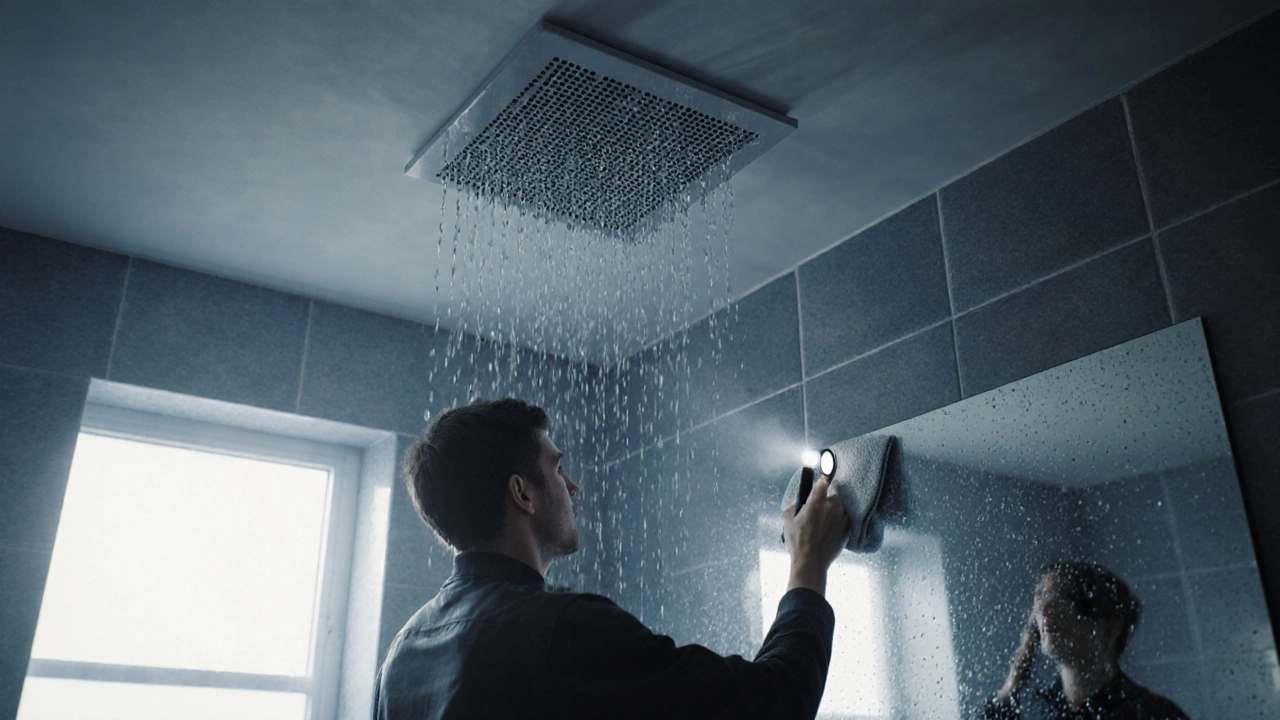
- 30 Oct 2025
- Gideon Thornton
- 0
Ever turned on your extractor fan and heard nothing but silence? Or worse - it’s running but still smells like last night’s curry? You’re not alone. Extractor fans are one of those appliances you only notice when they stop working. And when they do, the problem doesn’t just disappear - it lingers in the air, the walls, the bathroom mirror. The good news? Most extractor fan issues are simple to fix. You don’t need to call a professional unless you’re dealing with wiring or major motor failure. Here’s how to troubleshoot your extractor fan yourself - safely and quickly.
Check the power first
Before you start taking things apart, make sure the fan is actually getting electricity. Sounds obvious, but a lot of people skip this. Start at the switch. Flip it on and off a few times. If it’s a pull cord, check if the mechanism is stuck. If it’s a wall-mounted switch, try replacing the bulb in the same circuit. Sometimes a blown bulb can trip a shared fuse or GFCI outlet. Next, check your consumer unit (fuse box). Look for a tripped breaker labeled ‘bathroom’, ‘kitchen’, or ‘extractor’. If it’s tripped, reset it. If it trips again immediately, don’t keep resetting it - there’s a short circuit or overload. That’s when you stop and call an electrician. If you’ve got a timer or humidity sensor fan, those can fail silently. Try bypassing the timer by manually turning the fan on. If it works then, the timer is broken. Same with humidity sensors - they get gunked up with steam and dust over time. Clean them with a dry cloth or replace them if they’re older than five years.Listen for the noise
A fan that hums but doesn’t spin is usually a dead capacitor. This is common in older models. The capacitor gives the motor that initial kick to start spinning. When it dies, the motor might still get power - you’ll hear a low buzz - but the blades won’t turn. To check: turn off the power at the breaker. Remove the fan cover. Look for a small cylindrical component, usually black or silver, wired to the motor. If it’s bulging, leaking, or cracked, it’s blown. Capacitors cost under £10 and are easy to replace. Just take the old one to a hardware store and match the microfarad (µF) rating and voltage. Always discharge it first by touching both terminals with an insulated screwdriver - even after power is off, it can hold a charge.Clear the ductwork
The most common cause of weak airflow? Blocked ducts. In kitchens and bathrooms, grease, dust, and hair build up inside the vent pipe over time. In older homes, the duct might even be crushed or disconnected behind the wall. Start by removing the fan grille. Use a vacuum with a brush attachment to suck out loose debris. Then, go outside (or into the loft) and check the external vent. Is it clogged with leaves, bird nests, or snow? A blocked outlet stops air from escaping, which means the fan can’t pull air out of the room. You’ll notice condensation, lingering smells, and mold growth. If you’ve got a flexible plastic duct, it’s probably the culprit. These kink easily and trap grease. Replace it with rigid metal ducting - it lasts longer, resists fire, and doesn’t sag. Make sure the duct runs as straight as possible. Every bend reduces airflow by 10-15%.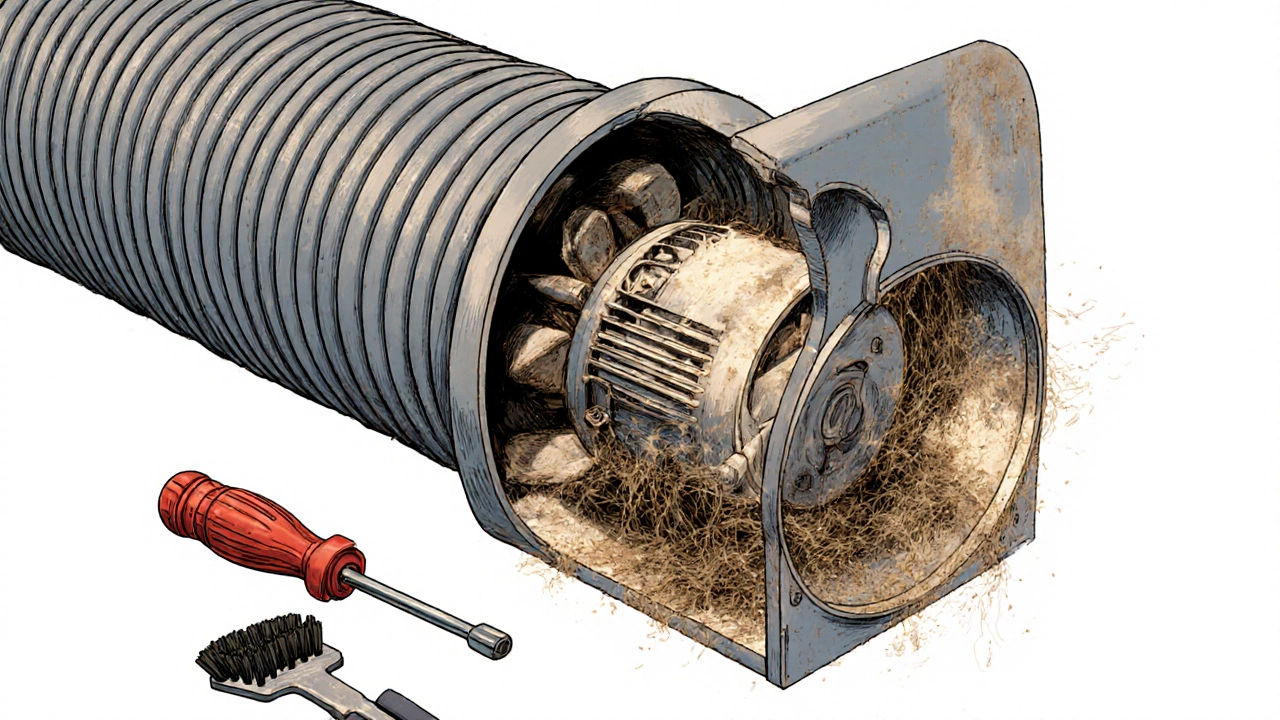
Check the blades and bearings
If the fan runs but sounds like a jet engine, the bearings are worn out. Dust and grease stick to the motor shaft, causing friction. Over time, this wears down the bearings. You’ll hear a grinding, screeching, or rattling noise. Turn off the power. Remove the blades. Spin the motor shaft by hand. If it feels rough or gritty, the bearings are shot. You can try lubricating them with a drop of lightweight oil (like 3-in-1), but it’s usually a temporary fix. Most extractor fan motors aren’t designed to be rebuilt. If the noise returns after a few weeks, replace the whole unit. Also check the blades themselves. Are they cracked, warped, or covered in thick grease? Grease buildup throws off the balance. Even a small amount can cause vibration and noise. Clean them with warm soapy water and a soft brush. Dry completely before reassembling.Smells and moisture problems
If your kitchen fan smells like burnt oil or your bathroom still feels humid after a shower, you’ve got a design or maintenance issue. In kitchens, grease filters trap cooking fumes - but if they’re not cleaned regularly, they become fire hazards and odor traps. Most filters are either washable or disposable. Check your manual. If you haven’t cleaned yours in over three months, do it now. Soak in hot, soapy water, scrub with baking soda, rinse, and dry. In bathrooms, condensation is normal - but if water drips from the fan or the ceiling looks stained, the duct might be leaking. Condensation forms inside cold ducts, especially if they run through unheated spaces like lofts. Insulate the duct with foil-backed insulation tape. Or better yet, install a fan with a built-in humidity sensor and timer. These turn on automatically when moisture rises and run for 10-20 minutes after you leave the room. That’s the best way to prevent mold.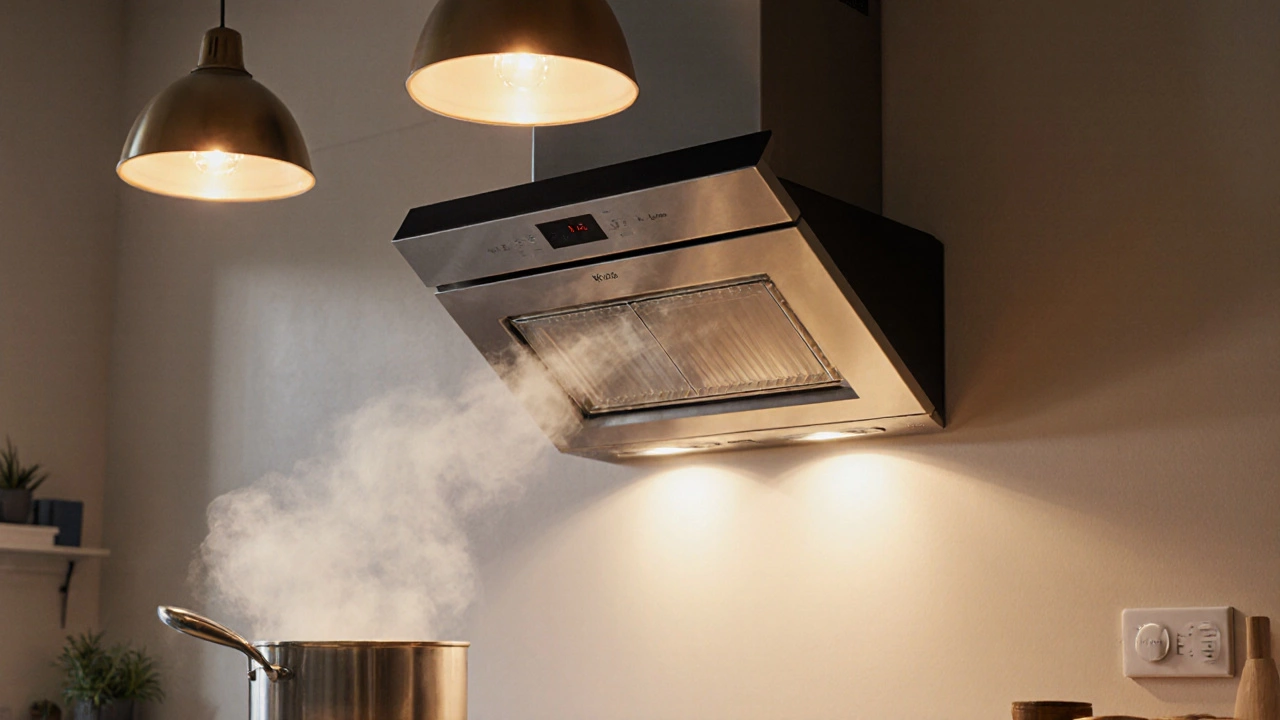
When to replace the fan
Not every problem is fixable. If your fan is over 10 years old, it’s probably inefficient, noisy, and hard to find parts for. Modern extractor fans are quieter, use 60% less energy, and come with smart features like timers, sensors, and reverse airflow for better ventilation. Look for these signs it’s time to upgrade:- It takes more than 10 seconds to clear steam or smells
- You hear constant rattling or buzzing even after cleaning
- The casing is cracked or discolored from heat
- It’s not certified to current UK building regulations (Part F)
Quick checklist: Your extractor fan repair roadmap
- ✅ Check the power: switch, breaker, timer
- ✅ Listen for humming: likely capacitor failure
- ✅ Clean or replace grease and dust filters
- ✅ Inspect and clear the duct from both ends
- ✅ Spin the motor shaft by hand - rough? Bearings are worn
- ✅ Look for condensation or mold - duct may be uninsulated
- ✅ Replace if over 10 years old or inefficient
Frequently Asked Questions
Why does my extractor fan turn on by itself?
If your fan turns on without you touching the switch, it’s likely a humidity or motion sensor malfunction. These sensors get dirty or overly sensitive over time. Clean the sensor with a dry cloth. If that doesn’t help, bypass the sensor temporarily by wiring the fan directly to the switch. If it stops turning on by itself, the sensor needs replacing. Some newer models let you adjust sensitivity in the settings - check the manual.
Can I install a new extractor fan myself?
Yes, if you’re replacing a fan with the same size and type, and you’re comfortable turning off the power and connecting wires. Most modern extractor fans come with plug-in connectors or terminal blocks - no soldering needed. But if you’re moving the duct, cutting into a wall, or wiring into a live circuit, you need a qualified electrician. UK building regulations (Part F) require extractor fans in bathrooms and kitchens to be installed correctly to prevent condensation and mold. A certified installer can also help you choose the right CFM rating for your room size.
Why is my extractor fan so loud after cleaning?
If the fan got louder after cleaning, you probably didn’t reassemble it properly. Check that the blades are seated correctly on the motor shaft and that all screws are tight. A loose blade or misaligned housing can cause vibration. Also, make sure the duct isn’t pinched or bent when you put the cover back on. Even a slight kink can create turbulence and noise. If everything looks right, the motor bearings may be worn out - cleaning doesn’t fix that.
Do extractor fans need regular servicing?
They don’t need professional servicing, but they do need regular maintenance. Clean the grille and filters every 3 months. Check the duct for blockages twice a year - especially before winter. Listen for unusual noises. Replace the fan if it’s over 10 years old or if energy bills are rising. A well-maintained extractor fan lasts 15-20 years. Neglect it, and it could fail in under five.
My fan works but the light doesn’t. What’s wrong?
If the fan runs but the light won’t turn on, the bulb is likely burnt out or the light socket is faulty. Try replacing the bulb first - make sure it’s the correct wattage (usually 10-20W LED). If that doesn’t work, turn off the power and inspect the socket. Look for blackening, melted plastic, or loose wires. A faulty socket can be a fire hazard. Replace the whole unit if the socket is damaged. Don’t try to repair it yourself unless you’re qualified.


